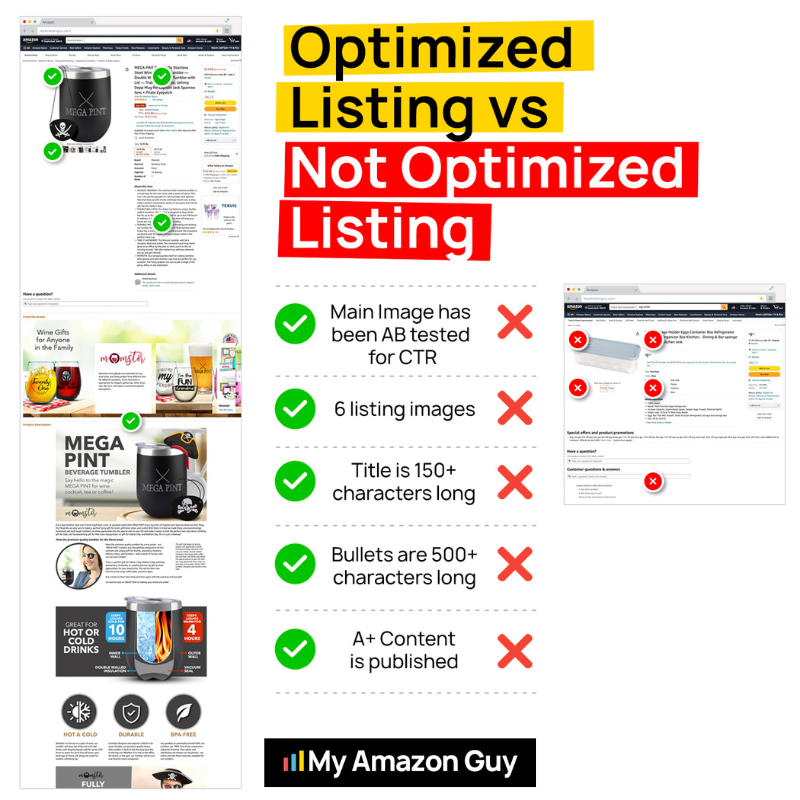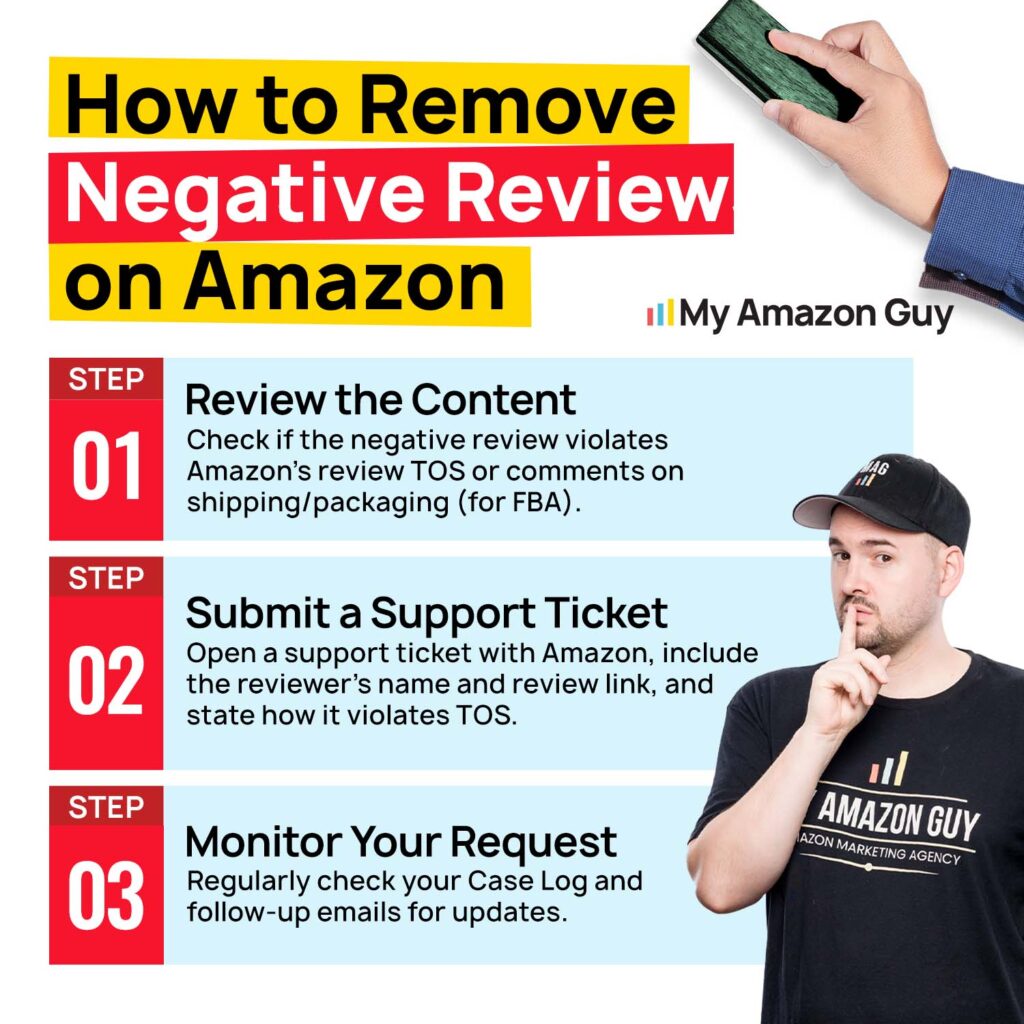In Amazon selling, providing an exceptional customer experience is crucial for a business’s success.
Whether you’re using Fulfillment by Amazon (FBA) or Fulfillment by Merchant (FBM), how you manage customer service can greatly impact your reputation. Each model presents unique challenges, impacting how sellers manage their customer interactions and service quality.
In this guide, our Amazon agency will go into these challenges and offer solutions that Amazon sellers can easily follow.
Customer Service Challenges for Amazon FBA Sellers
Fulfillment by Amazon offers advantages such as streamlined order fulfillment, access to Amazon Prime, and eligibility for additional Amazon programs. By entrusting Amazon Fulfillment Centers to handle inventory storage, packaging, and shipping, FBA sellers can focus on product development, marketing, and scaling their business.
However, relying on Amazon for core fulfillment operations introduces unique challenges in managing customer service. While Amazon handles a significant portion of customer interactions, FBA sellers still play a crucial role in shaping the overall customer experience.
Below are the challenges FBA sellers face and ways to solve them:
1. Dependency on Amazon's Customer Service Standards
FBA sellers are inherently reliant on Amazon’s customer service standards. This dependence can be an advantage and a disadvantage at the same time.
On one hand, Amazon’s robust customer service infrastructure can enhance a seller’s reputation. On the other, inconsistent service quality can negatively impact a seller’s brand.
Solutions:
- Proactive Monitoring: Use Amazon Seller Central to track customer interactions and feedback, allowing for product or service improvements based on reviews.
- Making Use of Feedback: Utilize feedback from reviews and Seller Central to make necessary product improvements and enhance future customer experiences.
- Developing Internal Customer Service Standards: Develop customer service protocols for interactions outside Amazon’s platform to improve overall consumer satisfaction.
2. High Return Rates
FBA sellers generally experience higher return rates compared to FBM sellers. This is primarily due to Amazon’s customer-centric return policy, which often makes it easier for customers to initiate returns.
When consumers experience issues requiring returns, it negatively impacts the customers’ overall satisfaction with the purchase and the brand. Dissatisfied customers are more likely to share their experiences with others, deterring potential customers.

Solutions:
- Optimize Product Listings: Provide clear and detailed product descriptions, including size, color, material, and dimensions. This helps customers make informed decisions, reducing the likelihood of returns due to misunderstandings.
- High-Quality Images: Multiple listing images from different angles, showcasing product details, and dimensions, help customers visualize the product accurately, minimizing returns caused by unexpected appearances.
- Customer Reviews: Encourage customers to leave honest reviews. Analyzing reviews can help identify potential issues and make necessary product improvements.
3. Limited Control Over Customer Interactions
FBA sellers have limited direct interaction with customers. This can hinder their ability to build relationships, address customer concerns promptly, and gather valuable feedback.
Solutions:
- Accurate Product Information: Use concise and accurate information in product listings to minimize customer inquiries.
- Build a Strong Brand Identity: Create a strong brand identity through marketing materials and social media platforms where you want consumers to connect with you. This way, customers can reach out to you using other channels that you have more control over.
- Amazon’s Customer Metrics: Track relevant metrics like order defect rate and negative reviews to identify potential issues with your products and take corrective actions.
4. Product Damage and Loss
When you buy a product online, it is only natural to expect that you will receive the item on time in perfect condition. So, when buyers receive damaged or lost products it can be a frustrating experience, leading to dissatisfaction.
Unhappy customers are more likely to share their experiences with others by leaving negative feedback on your product listings.
Solutions:
- Utilize Amazon’s Loss and Damage Claims: Study Amazon’s claim process and file complaints promptly for damaged or lost inventory. As an FBA seller, this is the most direct way to address this issue.
- Reach Out to Amazon: When there are recurring issues like products being damaged or lost, communicate with Amazon. Discuss potential solutions to resolve the issues promptly to avoid having the same problem in the future.
5. Managing Negative Feedback
Negative feedback can significantly impact an FBA seller’s reputation and sales. It’s essential to address negative feedback promptly and professionally to mitigate its impact.
Solutions:
- Request Feedback Removal: Familiarize yourself with Amazon’s guidelines for removing inappropriate or inaccurate feedback and utilize Amazon’s feedback removal tools.
- Build Relationships with Customers: When possible, go the extra mile to resolve issues and build positive relationships with customers, even if they’ve left negative reviews.


6. Lack of Personalization
While Amazon offers some personalization features, FBA sellers have limited direct control over creating personalized customer experiences. This can hinder customer engagement and loyalty.
Solutions:
- Utilize Amazon’s Personalization Tools: Use Amazon’s built-in tools like product recommendations and customer segmentation to enhance the consumer experience.
- Focus on Product Quality and Description: Ensure your products meet customer expectations and provide detailed product descriptions to enhance the shopping experience.
7. Staying Updated on Customer Expectations
Customer expectations evolve rapidly, and sellers must stay informed about these changes to remain competitive. Failing to adapt to changing customer preferences can lead to decreased sales and customer dissatisfaction.
Solutions:
- Leverage Amazon’s Analytics: Utilize Amazon’s built-in analytics tools to track sales trends, customer demographics, and product performance.
- Monitor Customer Reviews and Feedback: Regularly analyze customer reviews and feedback to identify emerging trends and preferences.
- Stay Informed About Industry Trends: Keep up-to-date with industry news, consumer behavior studies, and competitor activities.
- Utilize Social Media: Monitor social media platforms for customer conversations, trends, and feedback.
- Conduct Customer Surveys: If possible, consider conducting customer surveys to gather direct feedback on preferences and expectations.
8. Balancing Customer Satisfaction with Profitability
Striking a balance between delivering exceptional customer service and maintaining profitability is a constant challenge for FBA sellers. Overspending on customer service can erode margins but neglecting customer needs can lead to decreased sales and negative word-of-mouth.
Solutions:
- Data-Driven Decision Making: By analyzing customer service metrics and feedback, FBA sellers can identify which strategies are yielding the best results. This could involve tracking response times, customer satisfaction scores, and return rates.
- Resource Allocation: Once effective strategies are identified, FBA sellers can allocate their resources, including budget and personnel, to those areas. This ensures that efforts are concentrated on what works best.
- Continuous Evaluation: Utilize Amazon’s analytics to assess the impact of customer service efforts on sales and consumer satisfaction.
Customer Service Challenges for Amazon FBM Sellers
Unlike FBA sellers, FBM sellers maintain full control over inventory, packaging, and shipping.
While this offers greater flexibility and potential for higher profit margins, it also places the entire responsibility for customer service on the seller. FBM sellers must handle customer inquiries, manage returns, and resolve shipping issues directly, demanding significant time, resources, and expertise.
Below, we explore the specific customer service challenges encountered by FBM sellers and provide actionable strategies to address them.
1. Handling Customer Inquiries Directly
FBM sellers are responsible for handling all customer inquiries directly, which can impact the overall customer experience. Directly handling customer support can be time-consuming and resource-intensive, potentially leading to delayed response times, inconsistent service quality, and customer frustration.
Inefficient handling of inquiries can damage brand reputation, erode customer trust, and hinder buyer satisfaction.
Solutions:
- Efficient Communication Channels: Establish multiple communication channels (email, phone, live chat) to accommodate customer preferences.
- Dedicated Customer Service Team: Consider hiring dedicated customer service representatives to handle inquiries efficiently.
- Knowledge Base: Create a comprehensive knowledge base or FAQ section to address common customer questions.
2. Managing Returns and Refunds
Handling returns and issuing refunds efficiently is crucial for maintaining consumer satisfaction. FBM sellers must manage the entire return process, including receiving returned items, issuing refunds, and restocking inventory which can be daunting.
Solutions:
- Clear Return Policy: Establish a clear and customer-friendly return policy to manage expectations.
- Efficient Return Process: Streamline the return process to minimize customer inconvenience.
- Inventory Management: Track returned inventory to ensure accurate stock levels.
- Refund Processing: Implement a timely refund process to maintain customer satisfaction.
- Restocking Fees: Consider implementing restocking fees for returned items to offset costs.
3. Shipping Delays and Issues
Shipping delays and issues can significantly impact buyer satisfaction and lead to negative reviews. FBM sellers are responsible for coordinating shipping, which can be challenging, especially during peak seasons or with carriers experiencing disruptions.
Solutions:
- Reliable Shipping Partners: Partner with reputable shipping partners to minimize delays and issues.
- Real-Time Tracking: Provide customers with real-time tracking information to manage expectations.
- Proactive Communication: Communicate with customers about potential shipping delays or issues.
- Packaging Optimization: Use appropriate packaging to protect products and prevent shipping damage.
- Seller Fulfilled Prime: Learn about the benefits and requirements for Seller Fulfilled Prime, and consider it as an option.
4. Maintaining Consistent Customer Service
Ensuring consistent customer service across all interactions is crucial for building trust and loyalty. Inconsistent experiences can damage brand reputation and lead to customer churn. FBM sellers must maintain high service standards even as their business grows.
Solutions:
- Customer Service Standards: Develop clear customer service standards and guidelines for all employees.
- Employee Training: Invest in comprehensive customer service training to equip employees with the necessary skills.
- Performance Metrics: Implement performance metrics to measure customer satisfaction and identify areas for improvement.
- Customer Feedback: Actively seek customer feedback to identify areas for improvement and address issues promptly.
- Technology: Utilize third-party customer service software and tools, like Help Scout and Feedback Whiz, to streamline processes and improve efficiency.
5. Building Customer Loyalty
Retaining customers and encouraging repeat business is crucial for long-term success. FBM sellers must build strong customer relationships to foster loyalty and advocacy.
Solutions:
- Personalized Customer Experience: Tailor interactions and offerings to individual customer preferences.
- Loyalty Programs: Implement a loyalty program to reward repeat customers.
- Customer Appreciation: Recognize and appreciate loyal customers through special offers or exclusive benefits.
- Effective Communication: Maintain open and transparent communication with customers.
- Handling Complaints Effectively: Address customer complaints promptly and professionally to prevent customer churn.
Don’t know what to do when receiving customer complaints? Check out our video on how we helped a client fix a negative 1-star review on Amazon:
Key Points:
- Negative Review Crisis: A bad review threatens product reputation.
- Product Information Update: Highlight product safety and quality with clear descriptions.
- Visual Appeal: Enhance product images to showcase features and benefits.
- Strategic Pricing: Implement a temporary price reduction to boost sales.
6. Lacking Customer Experience Feedback
FBM sellers often struggle to gather comprehensive customer feedback. Without this valuable information, it becomes difficult to identify areas for improvement, measure customer satisfaction, and make data-driven decisions.
Solutions:
- Customer Surveys: Implement customer surveys to gather feedback on product satisfaction, service quality, and overall experience.
- Encourage Reviews: Incentivize customers to leave product reviews and provide clear guidelines on how to do so.
- Monitor Social Media: Track mentions of your brand on social media platforms to gather customer sentiment.
- Analyze Customer Support Interactions: Review customer inquiries and complaints to identify common issues and areas for improvement.
- Customer Loyalty Programs: Offer loyalty programs to encourage repeat business and gather feedback through program interactions.
7. Outdated or Insufficient Technology
Outdated or insufficient technology can hinder efficient customer service operations, leading to increased response times, errors, and customer frustration. Relying on outdated systems can limit a business’s ability to adapt to changing customer expectations and industry trends.
Solutions:
- Technology Assessment: Evaluate current technology infrastructure to identify gaps and areas for improvement.
- Customer Relationship Management (CRM) System: Implement a CRM system to manage customer data, interactions, and support tickets efficiently.
- Order Management System: Utilize order management software to streamline order processing, inventory management, and shipping.
- Regular Updates: Keep software and hardware up-to-date to ensure optimal performance and security.
8. Not Offering Real-Time Customer Service
Shoppers expect an immediate response and resolution when they message Amazon sellers. FBM sellers who lack real-time customer support channels risk losing customers to competitors who offer quicker response times and more convenient communication options.
Solutions:
- Live Chat: Implement live chat on your website to provide real-time customer support.
- Social Media Monitoring: Actively monitor social media platforms for customer inquiries and complaints.
- 24/7 Customer Support: Consider offering 24/7 customer support to accommodate different time zones and customer preferences.
Overcome Customer Experience Challenges Faced by FBA and FBM Sellers
Customer service plays a crucial role in shaping the overall customer experience on Amazon.
FBA and FBM sellers face distinct challenges, each requiring tailored strategies to enhance service quality and manage customer expectations effectively. By understanding these challenges and implementing appropriate solutions, Amazon sellers can improve their customer interactions and drive greater satisfaction, ultimately leading to increased success in their business.
Are you having difficulty improving customer service? Contact our Amazon agency to get the help you need!






